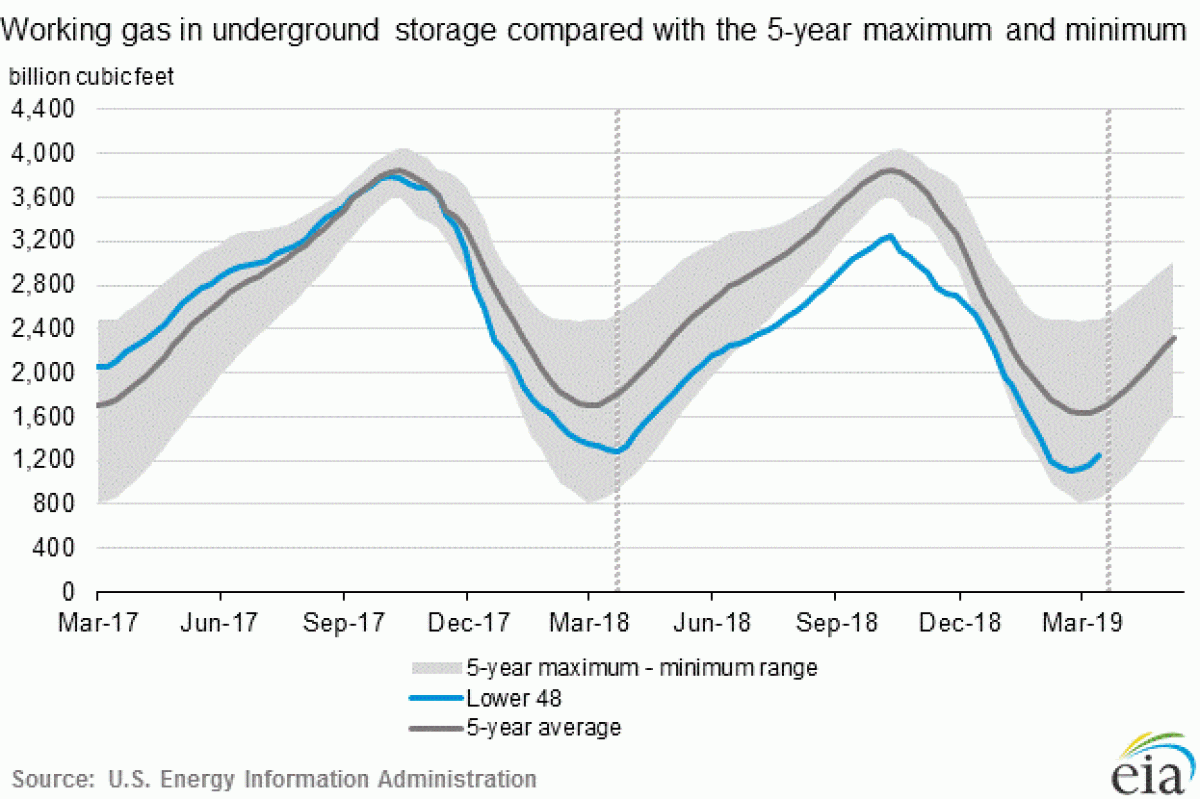Shrugging off low levels of storage, natural gas prices have continued to plunge.
The U.S. entered this past winter with natural gas supplies at a 15-year low. Paltry levels of gas in storage, just ahead of the peak winter demand season, pushed prices up to the highest level in four years. A cold snap in November led to a jump of around 30 percent in a week, an increase so fast and so quick that it forced at least one trading firm out of business. By mid-November, prices had climbed as high as $4.80/MMBtu.
Worryingly, the rest of winter still lay ahead. Gas supplies in storage were at their lowest levels in a decade and a half, and demand had steadily increased year-after-year as gas-fired power plants replaced shuttered coal plants. The surge in LNG exports and petrochemicals also amounted to a new source of demand that didn’t exist in its current form only a few years ago. To top it off, there were several rounds of extreme cold that swept across the North American continent, forcing millions of people to crank up the heat.
Yet, despite that backdrop, prices shockingly fell back rather quickly. A few weeks after the November price spike, Henry Hub spot prices dropped below $4/MMBtu. By February, prices fell below $3/MMBtu and remained there, with the market eyeing the end of the winter demand season. Now, with temperatures rising, prices recently plunged as low as $2.50/MMBtu.

However, the price decline comes even as storage remains remarkably tight. Natural gas inventories stood at 1,247 billion cubic feet (Bcf) as of April 12. Notably, despite the large increase of 92 Bcf from the week earlier, gas inventories were still 414 Bcf below the five-year average, and also at multi-year lows for the time of year.

(Click to enlarge)
Why are prices hovering close to their lowest levels in years, even though inventories have been decimated? Related: Artificial Intelligence Could Solve Nuclear Fusion's Biggest Problem
The answer largely comes down to record levels of production, with output continuing to rise on an ongoing basis. Analysts and gas traders have largely shrugged off low storage levels, expecting that the “injection season” – the months between April and November when demand is seasonally soft – will see storage levels fill up quickly, replenishing depleted stocks.

(Click to enlarge)
‘‘This is a very bad development here’’ for gas futures, Bob Yawger, director of the futures division at Mizuho Securities USA, told Bloomberg in an interview. ‘‘This is below the multi-year low and we are basically in no man’s land right now.’’
He we on to say ‘‘We have just a lot of gas production in this country,’’, adding that ‘‘Storage is in fact pretty far behind last year, but you can have as much gas as you want and as soon as you want it. That’s what’s killing the market.’’
The Marcellus and Utica Shales (classified by the EIA as the “Appalachia Region”) continue to pump out the nation’s largest amount of gas, with production above 30,000 million cubic feet per day. Output is expected to rise by another 353 million cubic feet per day in May, according to the EIA’s Drilling Productivity Report.
The Permian is adding huge volumes of new supply as well, a byproduct of the oil drilling frenzy. The Permian is now the U.S.’ second largest shale gas producer, expected to top 14,000 million cubic feet per day next month.
However, much of the Permian’s natural gas is going up in smoke because there is not enough pipeline capacity to move all of the gas to market.
The gas glut in the Permian has become so acute that prices recently crashed deep into negative territory. The state has relatively lax standards on flaring, allowing producers to simply burn off gas they can’t capture. Permian drillers were flaring gas at the rate equivalent to the entire residential demand in the state of Texas at the end of 2018, according to Bloomberg. Surely, the volumes of gas going up into the air have climbed since then.
Still, with the Permian and Marcellus adding record gas supply, along with a revived Haynesville Shale, the U.S. continues to break new records for gas output. That means that prices have little chance of climbing significantly higher in the short run.
By Nick Cunningham of Oilprice.com
More Top Reads From Oilprice.com:
- This Legendary Shale Basin Just Broke Its 2011 Production Record
- The Undeniable Signs Of A Shale Slowdown
- Can Big Oil Win Back The Younger Generations?


















